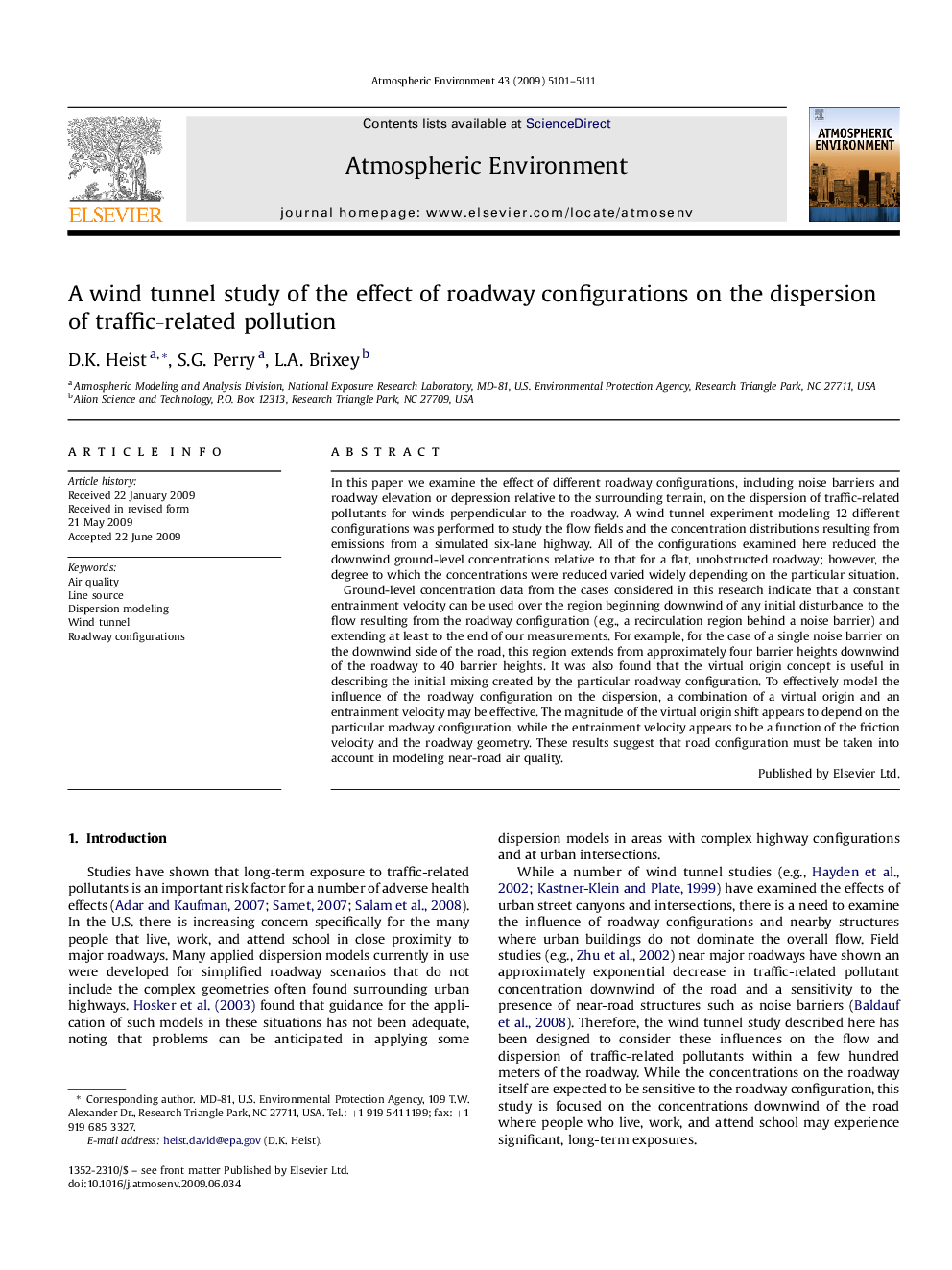| Article ID | Journal | Published Year | Pages | File Type |
|---|---|---|---|---|
| 4441321 | Atmospheric Environment | 2009 | 11 Pages |
In this paper we examine the effect of different roadway configurations, including noise barriers and roadway elevation or depression relative to the surrounding terrain, on the dispersion of traffic-related pollutants for winds perpendicular to the roadway. A wind tunnel experiment modeling 12 different configurations was performed to study the flow fields and the concentration distributions resulting from emissions from a simulated six-lane highway. All of the configurations examined here reduced the downwind ground-level concentrations relative to that for a flat, unobstructed roadway; however, the degree to which the concentrations were reduced varied widely depending on the particular situation.Ground-level concentration data from the cases considered in this research indicate that a constant entrainment velocity can be used over the region beginning downwind of any initial disturbance to the flow resulting from the roadway configuration (e.g., a recirculation region behind a noise barrier) and extending at least to the end of our measurements. For example, for the case of a single noise barrier on the downwind side of the road, this region extends from approximately four barrier heights downwind of the roadway to 40 barrier heights. It was also found that the virtual origin concept is useful in describing the initial mixing created by the particular roadway configuration. To effectively model the influence of the roadway configuration on the dispersion, a combination of a virtual origin and an entrainment velocity may be effective. The magnitude of the virtual origin shift appears to depend on the particular roadway configuration, while the entrainment velocity appears to be a function of the friction velocity and the roadway geometry. These results suggest that road configuration must be taken into account in modeling near-road air quality.
